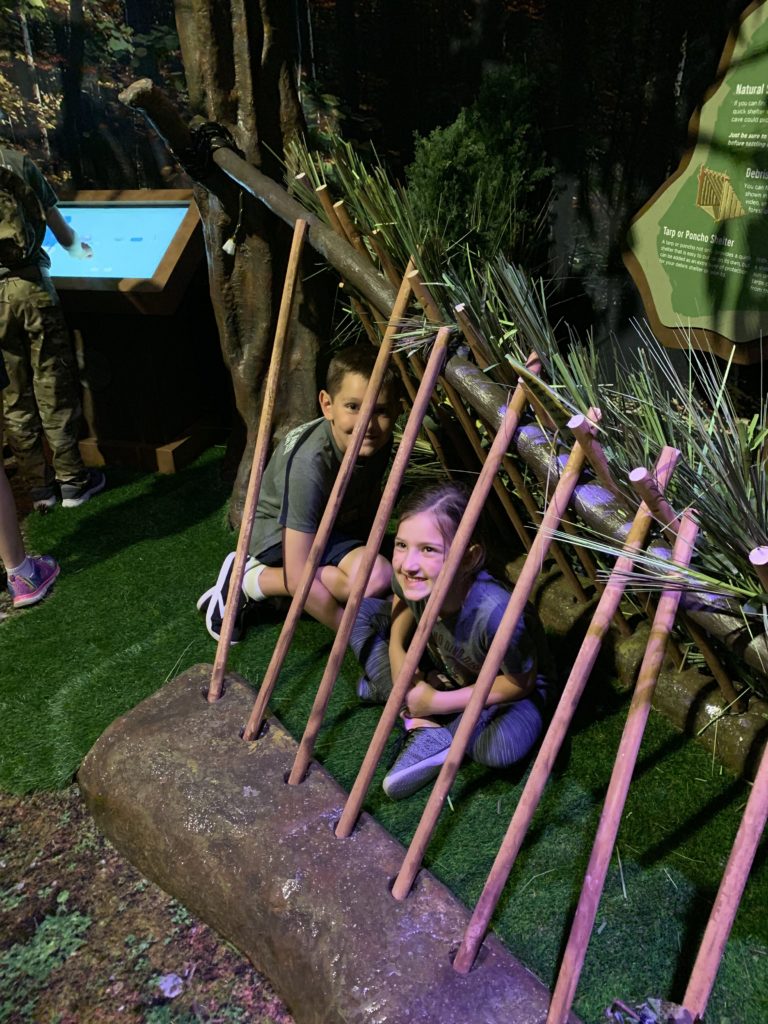Exhibit Teaches Survival Skills
By JASMINA WELLINGHOFF, Editor –
Lots of Texans like to explore the wilderness, camp and engage in water adventures but how many are prepared for the unexpected? What happens if you get lost and need to survive in the desert or the rain forest, or at high altitude, for instance?

To learn all sorts of useful survival skills, visit the Witte Museum’s summer exhibit Survival: The Exhibition, which recently opened in the Mays Family Center and runs through Labor Day. Created by the Atlanta-based Imagine Exhibitions, Inc., the fun and educational show is the first of its kind and the Witte is the first venue to offer it. Chances are, everyone will learn something – kids, adults and savvy explorers, too.
Even the museum’s curator of anthropology, Bryan Bayles, acknowledges that he is “learning new things all the time.” “I worked in the desert but I didn’t know that you could make a water filtration device out of your water bottle, for instance,” he said “Another thing I learned is how to catch small fish for food without fishing gear, and how to save yourself if you fall through the ice.”

The latter is a truly scary situation. This writer lived in Minnesota for a number of years, where people used the many small lakes that exist even in the city of Minneapolis, as skating rinks in the winter. Falling through the ice into the frigid water below happened with some regularity and not everyone survived. In the Witte exhibit, the life-saving maneuver is shown on video. Basically, spread your arms quickly over the ice surrounding the hole, then keep kicking your feet in the water to propel yourself forward onto the ice. It requires presence of mind, and that is one of the messages of the entire exhibit: don’t panic, be prepared and focus on the task.

As for the other two things Bayles mentioned, the exhibit shows you how to create a makeshift water filter by using layers of gravel and sand in your water bottle. And the bottle comes in handy again for catching small fish. To do that, cut the bottle below the neck and insert the top back in in reverse. Place in a stream for a while. It’s not going to be a feast, but a few small fish will likely be caught inside.
And there’s so much more.
The exhibit is divided into nine zones with immersive and interactive elements throughout. After a video introduction, you’ll find yourself in a relatively plain space where you can learn first aid skills useful in a variety of situations, including how to properly execute CPR. Beyond that, the scenery changes dramatically as you step into the Temperate Forest zone, such as the E. Texas forest, and come face to face with a standing bear. Small kids may get frightened but they’ll probably soon relax as they get engaged in building a shelter out of reeds. They can also learn how to behave if they encounter a real bear.
Next is the Desert Zone where you’ll find out how to find water and how to purify it, followed by the High Mountains where keeping warm and building a fire are the main issues. In the Rainforest zone you’ll learn to make simple tools; find edible plants; catch fish, as described above, and how to survive quicksand, among other things.
What to pack in a “bug-out” bag in case of emergency, how to send signals to potential rescuers and water safety are also included.
“The whole thing is about empowering people to be prepared for extreme and unexpected situations,” said Marise McDermott, the Witte’s president and CEO. “This knowledge will save lives.”
Survival was put together with the input of scientists and other experts from a range of disciplines, including anthropology, geography, recreational management, herbalism and wilderness survival.
“That’s another goal we have, to get people interested in a range of career paths they may not have been familiar with before,” said Bayles.
At the end, kids – and adults -will find a different zone altogether, the Adventure Zone, featuring a ropes course and a zip line. The day I visited, school children were pre-viewing the show, and the Adventure Zone was abuzz with their voices and activities.
“After you go through all that preparation and learning, you get to have fun here,” quipped McDermott.
Witte Museum, 3801 Broadway, 210-357-1922, www.WitteMuseum.org
